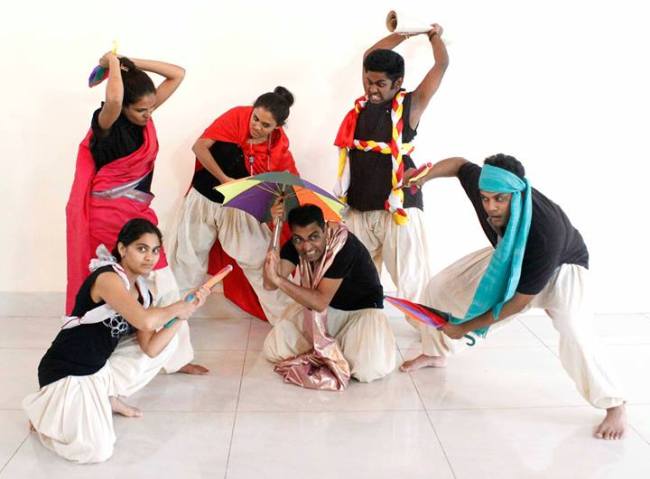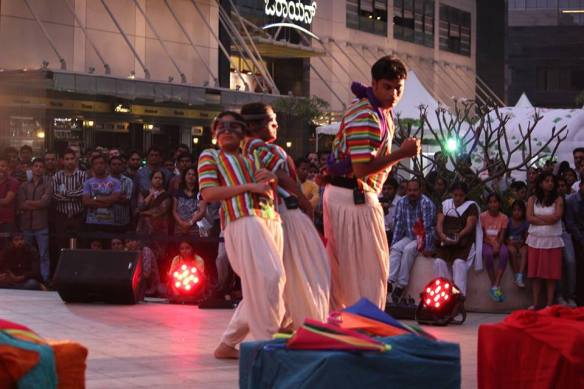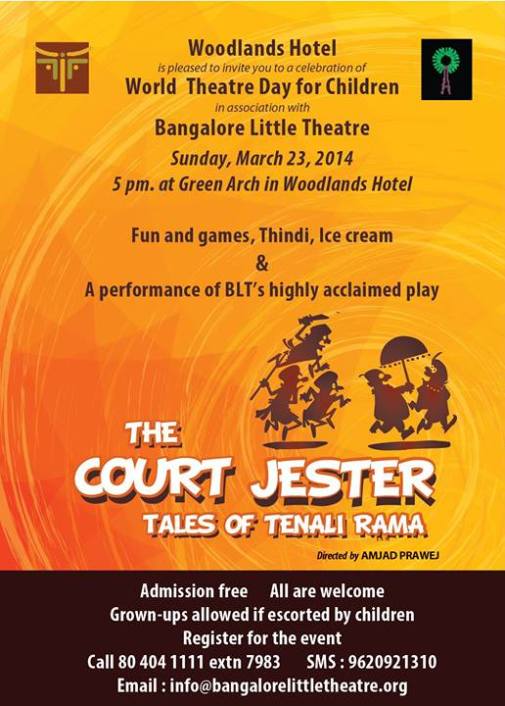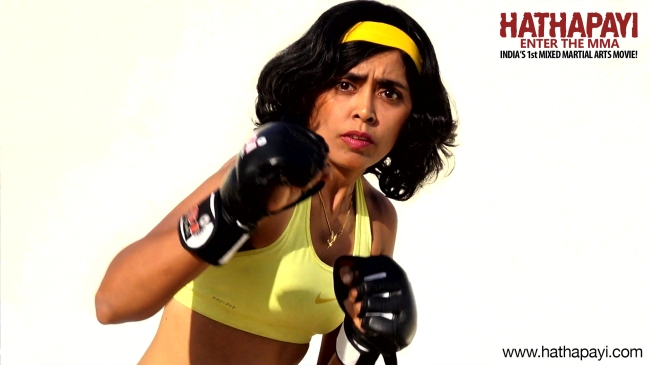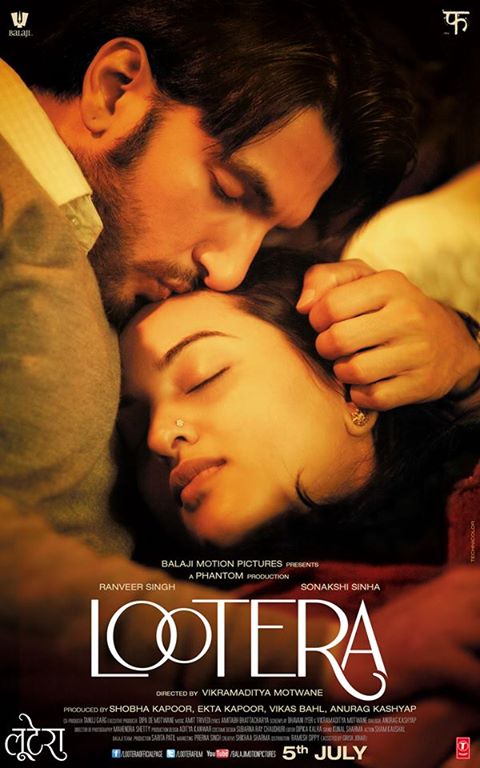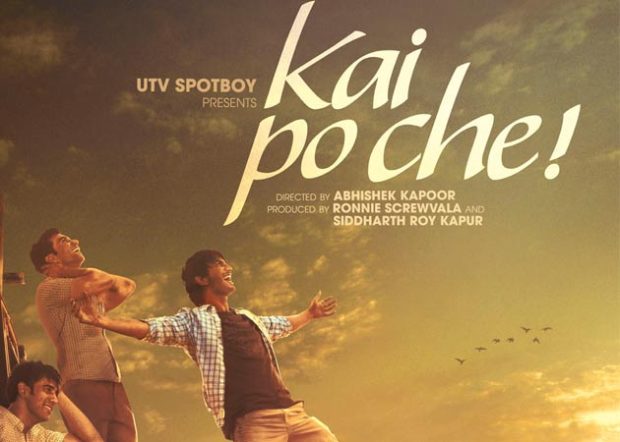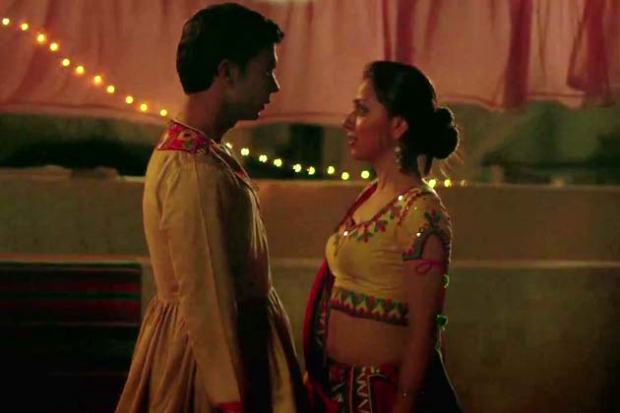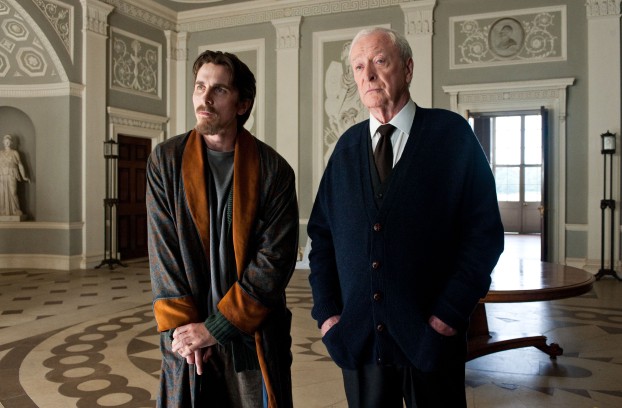Here is the full unedited version of my interview with Anand Gandhi, director of Ship Of Theseus. I’ve been meaning to put it up for sometime, but it kept on getting delayed.
The edited interview first appeared here. The original interview follows:
Runcil Rebello (RR): Tell me something about Anand Gandhi as a child. What did he read, what films did he watch?
Anand Gandhi (AG): I’ve been exposed to a barrage of images and ideas and thoughts as a child. My grandmom was a spiritual shopper… is a spiritual shopper. She would spend a lot of her days going to satsangs and meeting gurus of all kinds and totally into that. She would say I’m not into religion, I’m into these guys. I’m into sant log. I used to go around with her. My mum was a Bollywood fanatic. She’s a romantic. She loves romantic, sentimental poetry. She used to read Barkat Virani – this very romantic, sentimental poet. Equivalent of Ghalib in Gujarati. And she used to read him as a teenager and think that she would grow up to marry him someday. And I’ll cure him of all his pain and all his hurt. She was like that. She used to expose me to poetry, to cinema, to lots of theater, she used to take me to all these plays, and I would come out of them and say “this is an amazing experience”. I was 5-6 years old and I would be “I can do this, right?” and she would be like “Of course, you can. Why don’t you do it? Why don’t you write a play?” I was six years old when I wrote my first play, and my mom looked at it, and said, “This is genius.” It was highly encouraged. There was always a sense of the tiniest things that I was doing – there was a constant resonance, a constant reflection which was incredibly encouraging and very helpful.
So I saw a lot of cinema, lot of pop cinema, largely Bollywood. Hollywood for us at that time – I’m a child of the eighties – meant Jackie Chan, dubbed Jackie Chan, actually, and Honey, I Shrunk The Kids – like that. So that was the only exposure I had, but the consumption was very high. Also, the fascination ran very deep in everything, and I was encouraged to go all the way. So I wanted to pursue magic very seriously. My mom contacted a magician and asked him to come train me at home and he would train me in small card tricks, and table-top tricks. I spent a lot of time reading magic books and creating my own devices. This was when I was 7-8 years old. I really wanted to grow up to be a scientist. I always imagined that I will become a theoretical physicist someday. At that time, it was a scientist of course, I didn’t know what a physicist meant. Oh wow, Newton and Galileo, they were just like me when they were children. So I used to be fascinated by these ideas, and I was always encouraged.
I think there were a lot of disadvantages that became advantages at some point in time. For instance, a complete disinterest and a lack of aptitude in sport. Lack of a muscular body, I was really fat, absolutely no enthusiasm allowed me to do a lot of things that was entirely exciting and fascinating and on the other hand was compensatory. Compensating for the inability to be able to relate to children in the chawl I was growing up in. That was what childhood was like. Resources was limited, lived in a single room made of crude sheets of tins, brick walls, no tiling. That was natural, a way of life. It wasn’t perceived or communicated as an absence of resources. Everything that had to do with intellectual pursuit was highly encouraged. Science was encouraged, magic was encouraged, writing was encouraged, painting was encouraged – all sorts of intellectual pursuits were highly encouraged. Sacrifices were made by my mum and grandmum so I could pursue my notions of being an inventor – which I thought I was when I was nine years old. They would leave their jobs at hand or take to long-distance tours just to bring me things that I had read on books, material that you just cannot find anywhere. We’re talking of stuff like ‘spring with the caliber of so-and-so’, ‘0.3 mm of so-and-so’. Where the fuck am I going to get something like that? If you want to make a motor or a seismograph, and you try to make them because everything has been replaced by something else, and they would fall apart. But everything was encouraged. Choices were encouraged. Like when I was 8 or 9, I just told my mother that it doesn’t make sense that people burst firecrackers during Diwali. It’s not attractive, it’s incredibly irritating, it produces this noise – I was damn irritated by it as a child. I could not see how anyone was attracted to lighting a sutli bomb. I was like it produces a huge band, so what? It didn’t make any sense to me. So when I was 9 years old I went to my mom and told her this Diwali onwards I’m not going to burn any crackers. So do you you have a budget kept aside for anything like that? So she was like yea, I have forty bucks. So I was like Children’s Knowledge Bank Part 3 costs 18 rupees, so maybe I can buy both part 2 and part 3, which were the books I’d read for my Homi Bhabha Science competition which happens in classrooms.
RR: Your parents must have been very happy with you.
AG: I was very academically inclined, I was very attracted to knowledge. Deeply attracted to knowing and finding, I was extremely curious. And that was encouraged.

Anand Gandhi
RR: So you’ve always had this ‘explorer’ streak within you. When did storytelling enter the scene?
AG: It was a part of it. Only later in life was I able to see the continuum between all of them. Because especially when you’re growing up in India, you are always told “you can only do this.” The rest all is hobby. When you’re raised in that kind of an environment, where there is no infrastructure to groom a certain kind of thinking, a certain kind of envisioning, you kind of fall back on what is available. I was attracted to everything at the same time. I could not choose one over the other. I did not see why I had to choose one over the other. And that’s the reason I dropped out of college also. I just couldn’t consign to the idea that you could choose only one; it just did not make any sense to me. I was like, I’m incredibly interested in scientific inquiry, I’m interested in the inferences of physics, of microbiology, and neurosciences. But what do I do with that information if I don’t have the philosophy. If I don’t interpret the information being produced by scientific inquiry, that information is meaningless. What is this God Particle? What is this Higgs Boson? If I’m not able to interpret the information produced by the scientific inquiry, then it’s of no use to me. I need to know how it changes my life, I need to know how to use it to become a better person. How can I use it to make life around me better, more beautiful and engaging? So ‘satyam’ by itself is of no use, ‘shivam’ and ‘sunderam’ is also necessary. I need to use the satyam – the fact – produced by scientific inquiry and juxtapose it with the environment, with myself, with everything around and put a meaningful structure to it. Then I’ll find my role really relevant if I can take that inference, take that assimilation and weave it into narrative metaphor so that it can reach a really wide audience because that’s how inquiry has reached me. I was enlightened by cinema, you know, I was informed by cinema and theater, I came to know of a lot of things in life because of popular cinema and theater. So I thought it’s such a powerful medium and as I grew older I realised it is being utterly under-utilised. It’s a medium that can, while actually engaging you in a story, while engaging you in narrative, while entertaining you, it can/has the potential of actually enlightening you. It has the potential of bringing a rich and profound experience in you, profound epiphanies in you. Also, I became increasingly attracted to playing that role in life – That I can be magician, a scientist, a philosopher, an actor, a writer, – all of that together if I become a filmmaker.
RR: You’ve talked about entertainment and enlightenment. Which films in the recent past have you felt manage to do both?
AG: A lot of film. The Turin Horse was that for me. But it won’t be considered entertaining by a lot of people. For me it was engaging, entertaining and enlightening. Michael Haneke’s The White Ribbon was truly engaging and enlightening. Holy Motors was one film – there was a different kind of enlightenment – it opened up areas of examining – triggers – for me. Like how triggers can be triggers for triggers for triggers for experience. The whole sophistication of its simulation system was so high-end, so amazing. That enlightened me while entertaining me recently. And there are lots of other films. One film that was for me hugely entertaining, that was a big boost in my wanting to make films after that was The Matrix. I was 17 years old when I saw the film. I was just blown away by it. All the ideas that I’ve ever thought about, all the ideas that I’ve ever been attracted to, the idea of simulation, the idea of illusion, the idea of examining reality, social constructs, religious constructs, evolution of religion. All these ideas are in there with so much entertainment, so much accessibility. When I was 17, it just meant so much to me that time.
RR: Coming to Ship Of Theseus, why the eyes, the liver and the kidney? Why these three organs, or were there more while scripting?
AG: There were other organs as well. The initial idea was to make a story about 8 people. Then when I wrote the script, I wrote it about four people. There was also a heart. And by the time I started shooting, I started realising “This is going to be a very long film with three stories itself.” The fourth one in there is not going to be a film. It’s going to be a prolonged experience of some kind. It would have been a four hour long film. It would have been an impossibility. It was only due to the limitations of the medium. At the end, you can watch a film at a stretch for two and a half hours max.

A still from Ship Of Theseus
RR: There are people who have watched the film and said “It isn’t complex.” But there are many others who think the film is complex and some think it is a talkie. How do you intend to dispel these qualms, or are you even trying to dispel them?
AG: We are all equipped with different kinds of language. We are all equipped with different idioms. And we have all been informed and groomed by a series of experiences and education. Now within that paradigm, each one of us is going to have a certain kind of a _______ (audio unclear) My attempt would be to make the film as vast as possible. There is something in it for everybody. I’m Gujarati. I was raised in a culture where you have the thali. I was raised on popular culture where there is a thali on film also. Hindi popular film is where you have comedy, and dance and tragedy and romance. At an essential level, that is what I’ve done with Ship Of Theseus. It’s a film where you have so many ideas. It also has three filmmaking styles in it. Each story has been made in a different style. The approach has been completely different. So the first film is not that dependent on conversation, the third film is not that dependent on conversation. The second film is driven by the discourse. The first film is driven only by the image. The third film is driven only by the relationships: the interactions and the emotions. So each filmmaking style is different, each cinematographic style is very different. The film is really vast and the attempt is to have the range of experiences that we have had which is usually chaos. Because the magnitude of human experiences is so vast, and to fit it down into a reduced, bumper sticker is incredibly difficult. But that has been the inspiration, to pin it down, to nail down with rigour that it’s meaningful as a whole. And also the aspiration is that the whole is greater than the sum of the parts. The parts are extremely transparent and visible. If you see the parts unfolding one after the other, you can see the parts, enjoy the parts, and suddenly when it comes to the end, you have an experience where you’re like how did this happen? How did the whole – this experience that I have had is suddenly so much greater than the sum of the parts that I just saw. That is the aspiration, that is the attempt. I feel that some people have felt that way, at least.
RR: How was it after the World Premiere at Toronto where it got unanimous acclaim? What were your expectations, and did you get that?
AG: See the problem with an optimist is that you’re not pleasantly surprised. I’m an optimist. One of my closest friends is a cynic. He’s a pessimist. He says, “Toronto mein itne logon ne bol diya life-changing film hai, usse pav-wada wala thodi tujhko extra chutney dega.” So he’s always happily surprised. I’m never happily surprised because I expect the best and when it happens, I’m like, “alright, it was expected.” What I’d expected at Toronto was that the cinephile community, that the film will give a very deep and profound experience to some people. That I’d expected. What I’d not expected was that it will give a profound experience to everyone. That was unexpected. We were walking the streets of Toronto and people were coming and hugging us, “My life has changed, I’ve never experienced anything like this before.” That was still happily surprising.
RR: What was the situation of the release of the film before Kiran Rao entered the scene?
AG: We hadn’t talked to anyone yet. We were going to talk to some people. We were talking internally about reaching out to some people, but there were no serious talks, no serious engagements with anyone. We were still doing festival rounds. “Baad mein dekha jaayega.” And Sohum Shah is also like a mad visionary. Because he was acting in the film and he believed in the film so much, he’s like “You’re saying that the film is unprecedented. How can you expect anyone to understand something that is unprecedented?” Because I was looking for financing at that time, and he was rehearsing with me everyday. I would go to multiple producers and their reaction would be “This is amazing. Kya script likha hai! Kya kahaani hai! Wow. Par yeh India mein nahi samajh mein aayega logon ko.” The presumptuous arrogance is that ‘Main bahut intelligent hoon, mujhe bahut samajh mein aaya, main keh sakta hoon bahut kamaal hai. But Indian audience nahi samajh paayegi. Indian audience bechaare log hai.” That’s a presumption about 1/5th of human population. So Sohum would tell me, if we know there’s no precedence to anything like this, what reference do we have? He empathised with those people. “They’re businessmen. Unko kya pata hai yeh product ko kaise sell karein. Mujhe pata hai. So we should support it. I’ll put in all my money. Don’t worry about it. Go and make this film.”
He’s a bit of an anarchist, a visionary. Like fuck everything, we’ll do it our way. It’s also because of someone like him, the film could happen.

Sohum Shah, Kiran Rao and Anand Gandhi
RR: How do you think Kiran Rao is going to help you get more of an audience?
AG: See, Kiran is an amazing woman. She’s so driven and passionate about the cinema she loves. And it’s been a while since she said that a film has meant so much to her. She loved the film. She said that “I have not had this kind of a cinematic experience in the longest time.” You tell me, what’s next. We started talking about life, universe, cinema. We became really good friends, and in that period I kinda suggested about the possibility of her presenting the film. For the last few years, she has already engaged with a lot of audience. She’s made Dhobi Ghat, she’s produced Peepli [Live]. She knows the infrastructure very well. She knows this particular audience very well, who is a certain audience for this film. She also knows how to use the infrastructure to expand into the audience, who yet don’t know that they want to see this film. I feel there is a huge audience out there who haven’t sampled this kind of cinema and who hence don’t know yet that they want to see this. Once they see it, they would completely get hooked on to it. They would be like, “Oh fuck, yeh kyun koi nahi banata?” You look at youtube, twitter reactions, and people are saying life-changing experience, etc., there is also an audience how is saying “humne aisa kuch dekha hi nahi hai. Why don’t people make this in Bollywood?” So there is an audience that has not yet had a privilege that I had when I was 17 years old, who will come to this film and say this is the kind of cinema we want to see. And Kiran becomes a great medium for that kind of a communication. She’s already established an infrastructure, she already has access to a huge audience with whom she has been engaging with. She has also gained a huge amount of trust with distributors and exhibitors. She has brought in a huge amount of force that is becoming the vehicle of the film.
RR: Since you are now familiar with them, if you have a script for Aamir Khan, would you approach him?
AG: Yes. In fact, Aamir has shown a lot of enthusiasm, he loved Ship Of Theseus, he said that if you have anything that I could do, he would love to do it. He said whatever you are writing next, he would love to look at it, love to read it and see if that excites me. I wouldn’t mind that either. But the thing is, I can imagine Aamir giving that type of a commitment. You have seen the actors that are committed to the films I have made so far. The commitment is of a very severe level. The opportunity, costs become greater. Sohum Shah just spends an entire year doing that film. He eats, breathes, lives that film. When he was doing Ship Of Theseus, he put on weight, he became paunchy, he looks very different. He transformed, he changed his body language. He added small things. Neeraj Kabi, he lost 17 kgs. The commitment was 4 months before the shoot, he started getting rigourously involved with the philosophy of the film. So he became the philosopher he’s supposed to play first so that when he says those lines, it comes out with a sense of commitment. He went from being a non-vegetarian to a vegetarian. He committed to the rigourous diet that the film required him to go through. So the films that I’m making require a huge amount of commitment. I’m certain that if Aamir is convinced about the film, he would be willing to give in to that kind of a rigour. So that’s a relationship I’m completely open to.
RR: You’re pretty lucky getting a release on such a huge scale. How would you feel if you were in the place of an indie filmmaker who has made a good film which is not getting an opportunity for a release? Would you be jealous of yourself?
AG: My peers have been very kind to not be jealous or communicate any jealousy to me. They’ve all been very excited about the release. I understand your question. I’ve been fortunate to have found the crew, actors, producer I found. Found Kiran eventually. Just been a series of good fortune for me. For somebody who has not had that, for somebody who has made a film that is good, that is not necessarily pathbreaking, because you can’t always expect cinema of that kind. A film that is good, that can mean something to some people, that can have resonance and still not finding release – it’s a really bad situation then. It’s a situation that needs amendment, it’s a situation that needs very active audience participation. For instance, if there’s corruption, they need to come on the street and fight corruption. If we are not getting our basic amenities, we need to come on the streets and fight for it. Similarly, when out culture is so impoverished, is so poor and so low-brow, we definitely need to come to the streets and fight for a better culture, better ideas, because our life depends on culture. Our collective well-being, our social well-being, our economy depends on our intellect as a people. And films are the biggest medium for that kind of enlightenment. So I think people should participate in it very actively. The state should take a very active responsibility. It’s annoying that the state is not considering cinema as an important cultural vehicle for bringing about a social change, an intellectual evolution, a collective dialogue and introspection among people. Cinema around the world is such a powerful medium for that kind of an engagement. It is really a shame that the state is not looking at it that way. A certain kind of cinema should be tax-free. Tax should be totally lifted from cinema as a product of culture because it is something that will enrich us as a society.
RR: How has the entire experience of making the film and releasing it now changed you as a person?
AG: It’s very transformative. Growing up, you read about Satyajit Ray and Ritwik Ghatak and from other filmmakers from around the world like Ingmar Bergman, how one film completely transforms you as a person. And you think it’s a romantic expression, you know. It’s only after you have gone through this process, I have realised how physical it is, how real it is. It’s incredibly real – the transformative experience. I’ve gone through an exponential change I’ve become much larger than what I started out as. And I feel more calm, more secure. I feel more enlightened. I feel better about myself as a person. I feel I’m more equipped to do things. I also have grey hair. I only had black hair when I started out. One film made my hair go grey.

A still from Ship Of Theseus
RR: If you had to discuss your script with your peers, who would you go to?
AG: Khushboo Ranka, who worked on the story of Ship Of Theseus, she’s just one powerhouse of talent, and her vision and her talent is incomparable. She is right now in Delhi directing a documentary that I’m producing. Kiran is someone I’ve begun to trust, begun to rely on, begun to love talking to. The reflections she comes up with, the nuances she comes up with… she’s so compassionate, she’s so effervescent, and enthused, loving and generous. And she always brings in perspectives that are extremely human and empathetic to every idea I discuss with her. Megha Ramaswamy – she’s one of the brightest minds we have right now. She’s just extremely deep in her understanding of beauty and aesthetics, in her vision as a filmmaker and a writer. Chaitanya Tamhane is making his new film, Court, which is currently in post-production. Pankaj Kumar, my DoP, as far as I am concerned, I can say this, he is really the greatest artist working in India right now. He shot Ship Of Theseus, he shot Thumbad, he’s already been awarded four international awards. Everywhere in the world, they are saying this cinematographer, his vision is the newest vision. Transylvania people were ballistic “What the fuck was that?” “How can one see something like that?” I go to him right when I have an idea.
RR: What are your forthcoming ventures?
AG: Thumbad is in post-production. I have produced it, Sohum Shah has acted in it. Rahi Barve directed it. Rahi had shot his short film called Manja, that was really celebrated, everyone had loved it. It did rounds of festivals, won awards. Danny Boyle called it one of the most important films to come out of India. He distributed it on the Slumdog Millionaire blu-ray. This was also shot by Pankaj Kumar. Lot of people around Boyle at that time said that it’s better shot than Slumdog. And it is. Anthony Dod Mantle is a great cinematographer. But Pankaj Kumar is Pankaj Kumar. He’s a genius.

A still from Ship Of Theseus
RR: Anything that you are writing for yourself to direct?
AG: I’m writing a lot of things. There’s one film from that that we’re doing very soon. Again, with Sohum in it. But I’ll have to work more on it to make it presentable.
RR: Is there any genre that you as a director wouldn’t tackle?
AG: I’m not really attracted to gangster films. I just don’t get it. What’s so exciting about people killing each other? Like really stupid, frivolous people killing each other. I just don’t get it.
RR: So you didn’t like Gangs Of Wasseypur?
AG: I don’t get it. Like karne mein kya hai, I can even like jokes cracked by my friends. I don’t understand what’s so cool about making a film about gangsters. Unless there is an inquiry into it. Unless you’re informing me about the nature of revenge, the primitive need to avenge another, the social need for such a thing to occur and sustain. If you’re informing me in a very intellectual manner and a true discourse. If you’re showing me what’s happening, also show me why it’s happening, and not superficial reasons – not “politics make gangsters”. You know, like, deeply profound reasons of why something like that exists in the first place, which engages in at rue discourse, which enlightens me about – oh, this is the nature of violence, this is the nature of revenge, this is the nature of trying to capture resources through violence. If it’s informing me in a very deep way about something, then yes. But I don’t know anything like that.
RR: What kind of a director are you? Do you tell your actors I want stuff like this and this, or do you give them the script and let them do what they want?
AG: It’s actually both. See, before and after reading the script, they spend a long period of time with me. So I need to have a deep and personal connection with each and every actor I’m working with, so that I can communicate with them. The communication channel in my case becomes so transparent and it’s so strong that my actors and I fully and completely understand each other. Before even handing them the script, I’ve engaged them in a series of debates, a series of questions, a series of experiences that that character would have had. Then I give them the script. So at the script level, they’ve already gone through a long process, and even after that they go through a long process. So it’s a very rigorous and tedious approach.
RR: About your Kyunki Saas Bhi Kabhi Bahu Thi days, did you ever at that time, that you would be stuck here, and no one would ever be able to hear your voice, read your stuff?
AG: I was very young at that time to have any serious insecurity. I had very small insecurities. Will I be able to do things I wanna do? Will I be able to learn, educate, travel? Will I be able to make a film? So while writing Kyunki Saas Bhi Kabhi Bahu Thi and Kahaani Ghar Ghar Ki was a great experience it was actually putting me in a space where I was writing constantly something that was meant for mass consumption, while I was also writing plays that was meant for consumption of a small group of people. So it was a great place to be in to be able to experience both the distinct types.
RR: So you were certain that somewhere down the line, you would be able to get people to listen to you.
AG: I was very certain about it. I don’t know, I feel you need a certain amount of naivety to be so certain. You need to be a little innocent to be so certain. It’s like “arre yaar, apne se nahi hoga toh kisse hoga?” certainty and that’s a good driving force.




